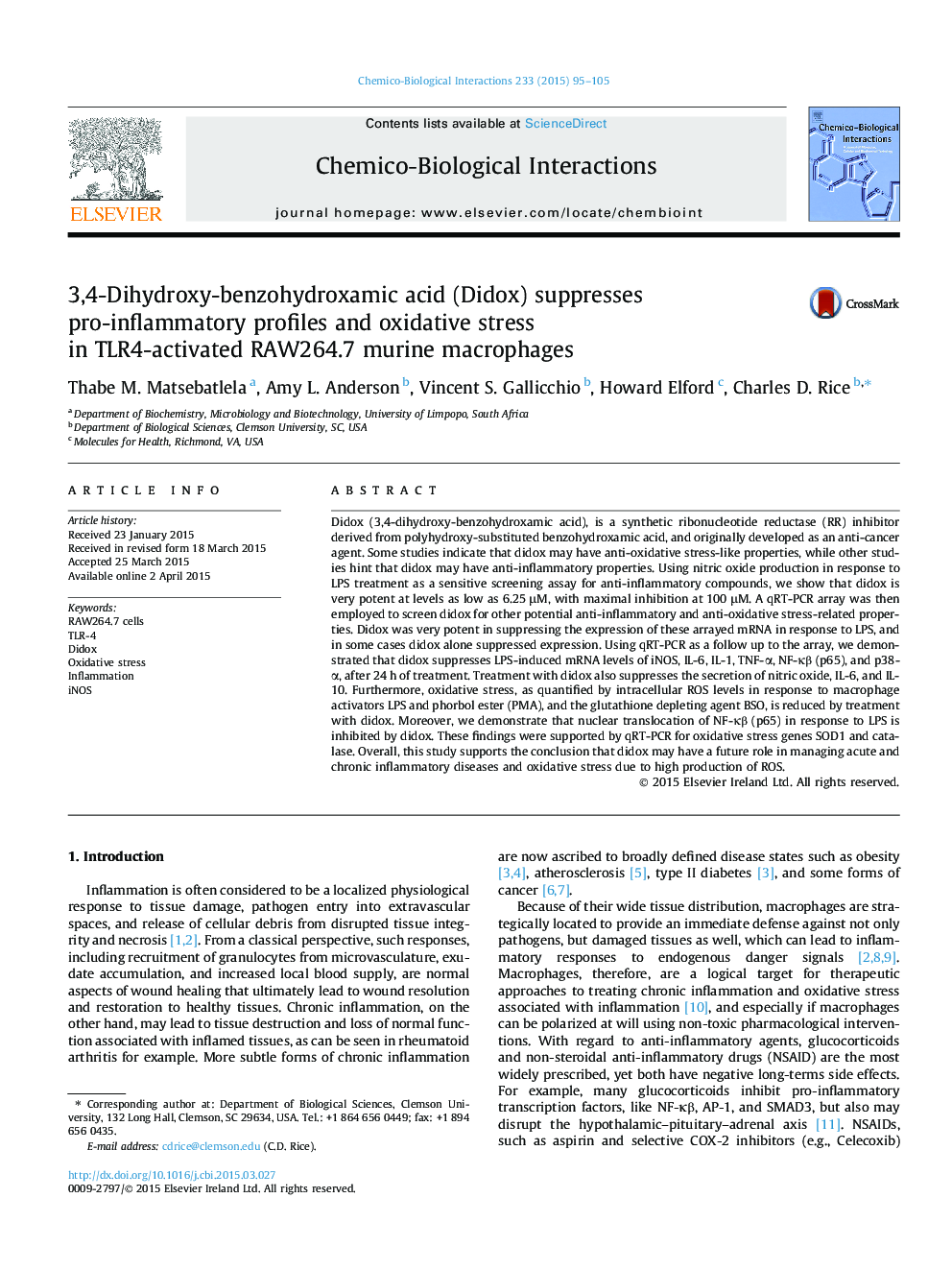| کد مقاله | کد نشریه | سال انتشار | مقاله انگلیسی | نسخه تمام متن |
|---|---|---|---|---|
| 5847874 | 1561608 | 2015 | 11 صفحه PDF | دانلود رایگان |

- Didox is a potent inhibitor of IL-6 secretion in RAW264.7 macrophages.
- Didox suppresses the expression of COX-2, iNOS, IL-6, and TNF-α gene expression.
- Didox ameliorates or scavenges reactive oxygen species production by LPS treatment.
- Didox enhances the expression of SOD1 and catalase genes.
Didox (3,4-dihydroxy-benzohydroxamic acid), is a synthetic ribonucleotide reductase (RR) inhibitor derived from polyhydroxy-substituted benzohydroxamic acid, and originally developed as an anti-cancer agent. Some studies indicate that didox may have anti-oxidative stress-like properties, while other studies hint that didox may have anti-inflammatory properties. Using nitric oxide production in response to LPS treatment as a sensitive screening assay for anti-inflammatory compounds, we show that didox is very potent at levels as low as 6.25 μM, with maximal inhibition at 100 μM. A qRT-PCR array was then employed to screen didox for other potential anti-inflammatory and anti-oxidative stress-related properties. Didox was very potent in suppressing the expression of these arrayed mRNA in response to LPS, and in some cases didox alone suppressed expression. Using qRT-PCR as a follow up to the array, we demonstrated that didox suppresses LPS-induced mRNA levels of iNOS, IL-6, IL-1, TNF-α, NF-κβ (p65), and p38-α, after 24 h of treatment. Treatment with didox also suppresses the secretion of nitric oxide, IL-6, and IL-10. Furthermore, oxidative stress, as quantified by intracellular ROS levels in response to macrophage activators LPS and phorbol ester (PMA), and the glutathione depleting agent BSO, is reduced by treatment with didox. Moreover, we demonstrate that nuclear translocation of NF-κβ (p65) in response to LPS is inhibited by didox. These findings were supported by qRT-PCR for oxidative stress genes SOD1 and catalase. Overall, this study supports the conclusion that didox may have a future role in managing acute and chronic inflammatory diseases and oxidative stress due to high production of ROS.
Journal: Chemico-Biological Interactions - Volume 233, 25 May 2015, Pages 95-105